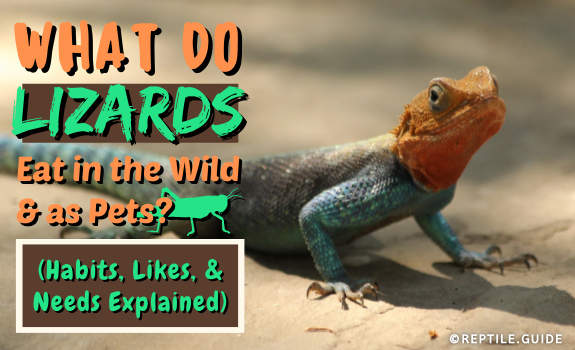People have been asking “What do lizards eat?” for centuries, and the theories have included things as outrageous as human hair and the souls of the dead.
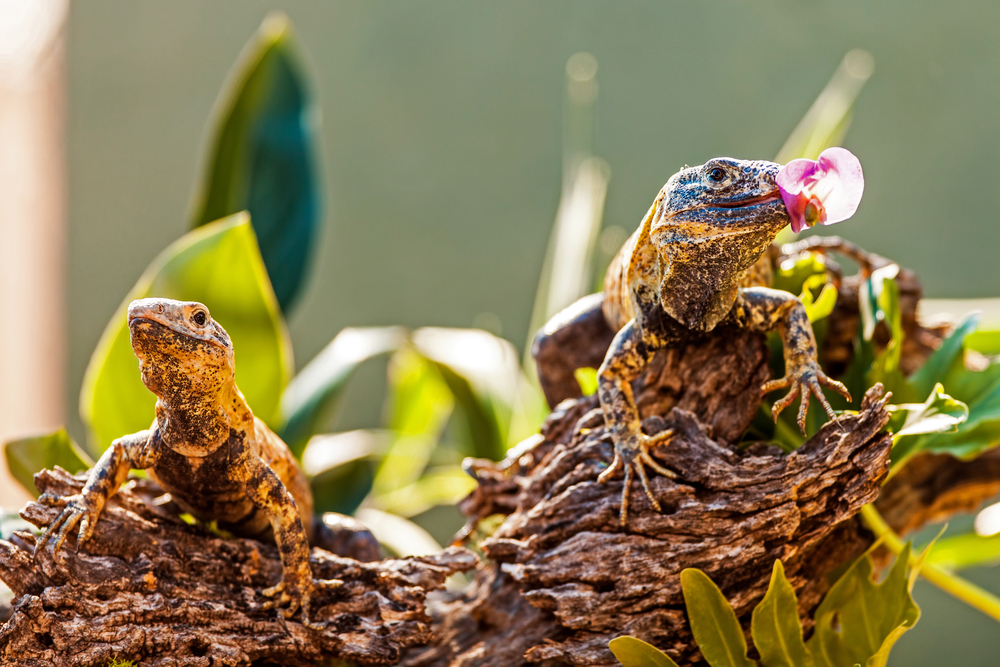
Fortunately for us, the truth is a lot simpler and less grotesque. This article will take a closer look at the answer to the question, and leave you without doubts.
In This Article
What Do Lizards Eat – In A Nutshell
Lizards typically eat smaller animals and, in some cases, flowers and leaves. However, the answer is a lot more complicated, and some lizards are quite voracious.
In the following segments, we’ll answer the questions:
- What does a lizard eat?
- What do baby lizards eat?
- What do lizards eat in the wild?
- What do small lizards eat?
- What do pet lizards eat?
- and what to feed a baby lizard.
What Do Lizards Eat In The Wild?
What do wild lizards eat?
For the most part, carnivorous lizards take the day. A wild lizard’s diet typically consists of small animals, especially insects. Most lizards eat meat.
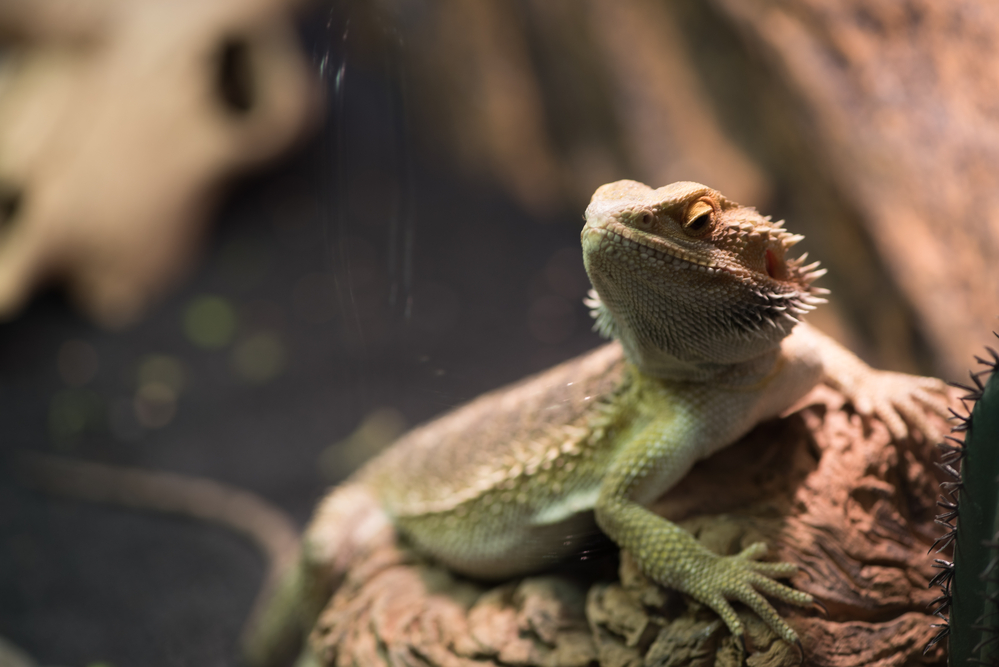
Insectivorous lizards are carnivorous lizards that feed only on insects.
Omnivorous lizards also exist and some species live on both meat and plant matter.
That’s not to say that herbivorous lizards don’t exist though. In a few exceptional cases, lizards eat plants.
Another question we see often is, “What do baby wild lizards eat?” Typically, they eat whatever their parents eat but in smaller amounts.
For instance, a herbivorous baby lizard will feed on the native plants in an area. A carnivorous lizard’s young will eat insects and other small animals. Omnivorous lizards’ babies eat both.
Let’s take a closer look at what lizards of each type might munch on in the wild.
Omnivorous lizards like bearded dragons may eat:
- Eggs and carrion
- Flowers and leaves of native plants
- Live prey like smaller lizards, frogs, and insects
Carnivorous lizards mainly eat live prey or other proteins like:
- Fish
- Insects
- Other lizards
- Amphibians
- Small rodents
- Larger prey (in the case of large predators like the Komodo dragon).
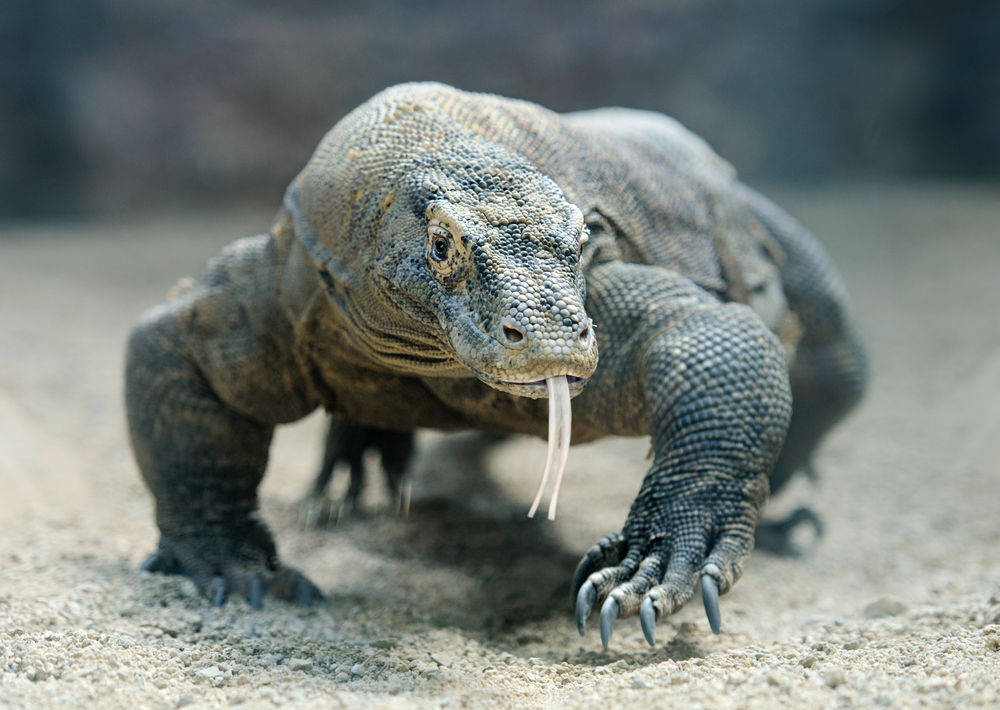
Insectivorous lizards feed entirely on invertebrates like:
- Ants
- Moths
- Crickets
- Beetles
- Earthworms
Herbivorous lizards eat native plants. Different lizard species adapt to eat different plant species that occur in their habitat.
What Do Pet Lizards Eat?
Captive lizards have similar needs to their wild counterparts. However, your pet lizard’s diet is largely dependent on what you can provide.
Your pet lizard may be a carnivore (meat-eating), herbivore (plant-eating), omnivore (eating both meat and plants, or insectivore (eating only insects).
Let’s take a closer look at a few examples of each of these types of pet lizard species.
Herbivorous lizards include:
- Chuckwallas
- Green iguanas
- Rhinoceros iguanas
- New Caledonia giant geckos
- Argentine black and white tegus
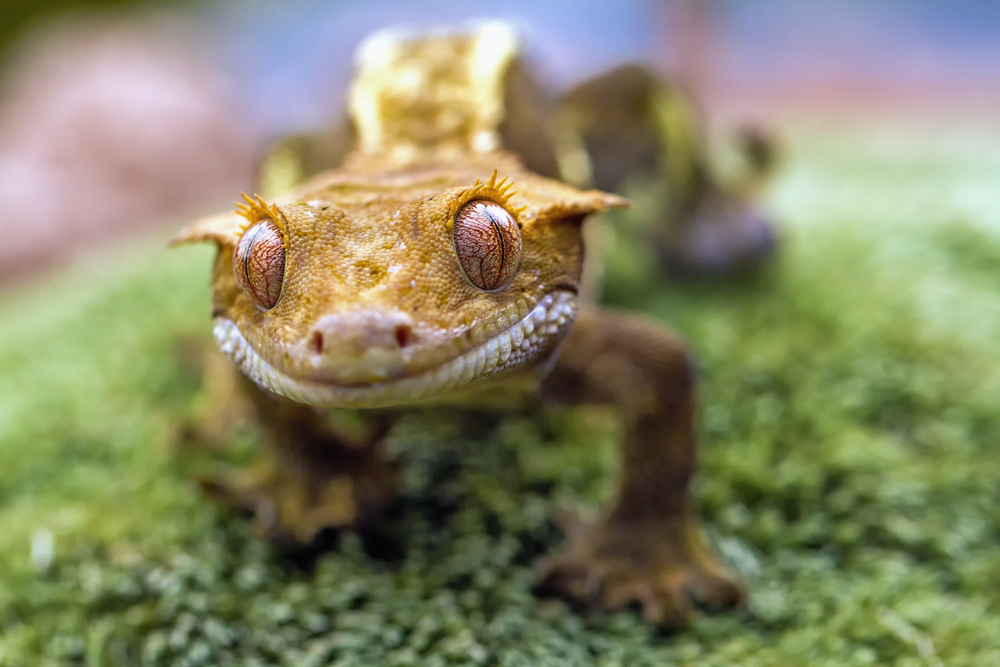
Carnivorous and insectivorous lizard species include:
- Most geckos
- Most monitor lizards
- Chameleons
- Basilisk lizards
- Some types of skinks
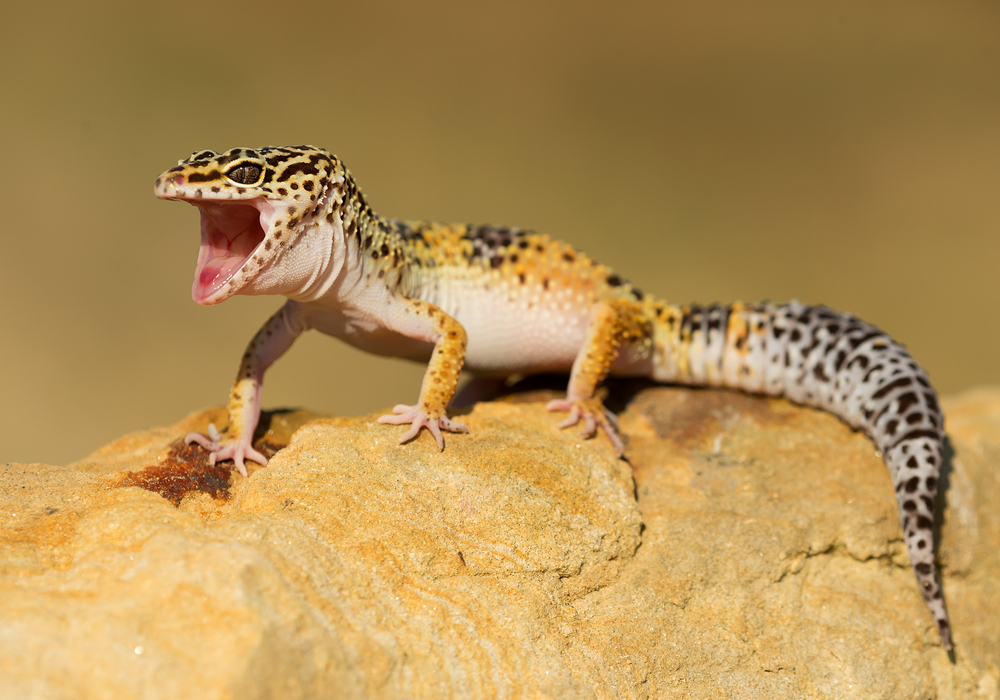
Some of the most popular species in captivity are omnivores, including:
- Bearded dragons
- Plated lizards
- Blue tongued skinks
- Pink-tongued skinks
- Water Dragons
Pet carnivores typically eat things like:
- Crickets
- Mealworms
- Superworms
- Pinky mice
Pet herbivores usually eat fruits and vegetables like:
- Apples, bananas, grapes, and berries
- Leafy greens like kales, lettuces, and celery
Pet omnivores usually eat a diet that combines these two things. Check out our bearded dragons’ feeding guide for an idea of how that works.
How Do Lizards Eat Their Prey?
Lizards have a somewhat unusual eating method since their mouths and throats don’t work like those of mammals.
Rather than having a hard palate and a soft palate, lizards only have a soft palate.
To compensate, the area below their eyes is soft, allowing these animals to force food down their throat by pushing their eyes and other organs against the top of the palate.
A lizard doesn’t chew either. Instead, they swallow their food whole. They also swallow stones and pebbles (gastroliths) which slosh around their stomachs and break food into smaller pieces.
Some lizards, like the monitor lizards, have a series of modified vertebrae around their throats. These bones help squash food down and break down large prey items.
If you’d like to know how lizards catch their prey, the answer is that there are two methods:
- The lizard lunges at its food and grabs it with a swift leap.
- The lizard may have a sticky tongue that flicks out of its mouth to catch prey.
How Do Lizards Eat Their Skin?
When they shed, lizards like crested geckos and house geckos usually eat their discarded skins. This allows them to consume all the nutrients that they put into creating the skin.
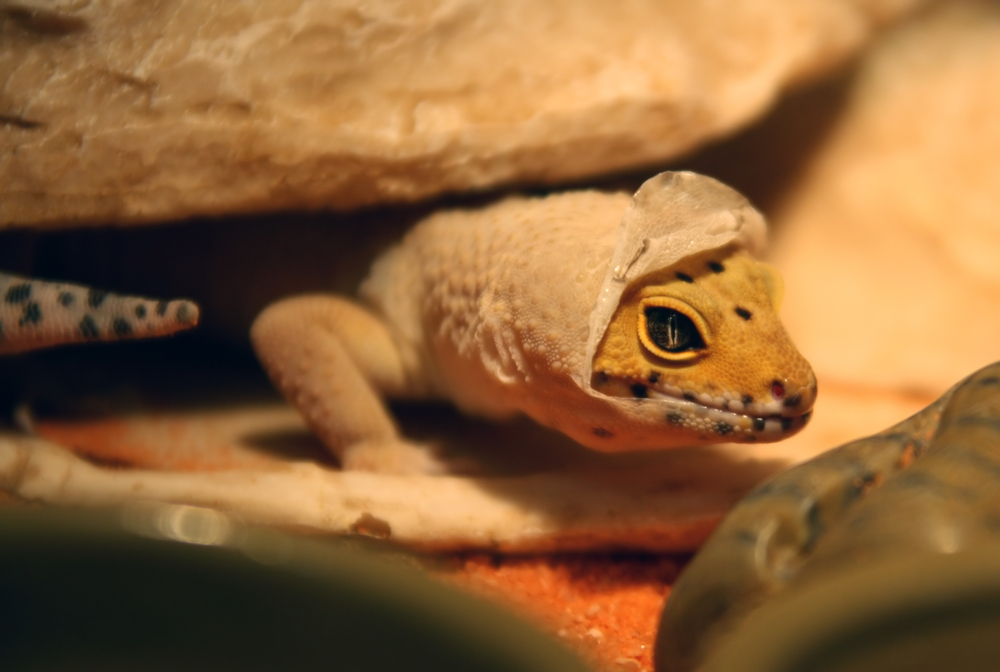
While you may sometimes see a lizard eating its skin after shedding it, they usually eat it while shedding.
This is the process that they follow:
- Shedding starts and the upper skin layer comes loose.
- The shed starts to come off – either in patches or as a “bodysuit”
- The lizard takes one of the loose flaps of skin and starts to pull it off, eating it as it goes. Often, the skin around the mouth, and covering the lizard’s eyes, gets eaten first.
If your lizard is unable to eat its skin while shedding, it may consume it afterward – in a single sitting.
While it sounds disgusting, many micronutrients needed for skin formation are hard to come by, and eating their shed skin helps prepare the lizard for the next skin formation.
When Do Pet Lizards Eat?
Pet lizards typically have scheduled feeding regimes. Most lizards don’t need to eat every day, but it depends on the species.
Bearded dragons need a daily meal, while most pet lizards only need three or four meals a week.
It’s up to you to research your specific species of lizard and ensure that it gets enough food.
Many lizards do poorly in captivity because they don’t get the right type of food. Other lizards get too much food which leads to obesity and heart problems.
We recommend getting veterinary advice to help you manage your baby and adult lizards’ diets.
Once you know how often your pet should eat, try to set a fixed schedule so they know exactly when their next feeding will be. This helps their systems to function properly.
Where Do Lizards Eat?
Your pet lizard differs significantly from wild lizards. Most wild lizards eat wherever they happen to be when they find food.
If a wild bearded dragon comes across an edible plant, it simply munches down. However, pet lizards lose many of the instincts that protect them in the wild.
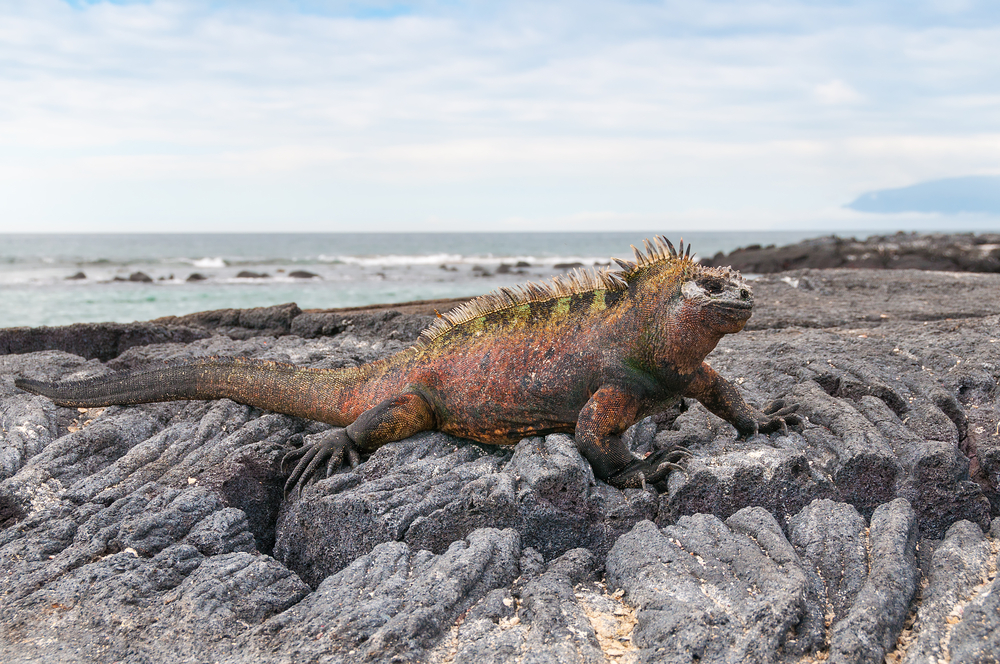
A wild beardie will naturally climb into the plant to prevent it from swallowing soil and getting an impaction. It also knows what to eat to clear its system if it does get impacted.
Pet lizards don’t have a wild pharmacy that they can choose from. Your pet lizard should eat out of a food bowl or from tongs.
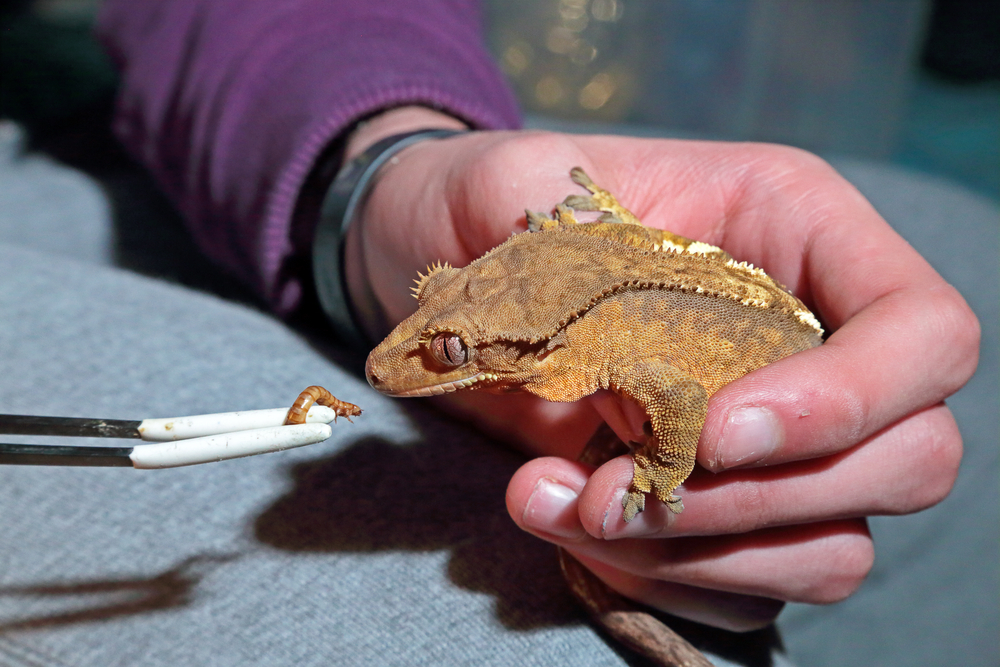
By offering specific feeding locations, your lizard knows where it can find food and is safe from disasters like impactions and some types of parasites.
What Do Baby Lizards Eat?
Baby lizards eat the same things as larger lizards, but in proportion to their body weight.
A young bearded dragon will eat small insects while adults eat large ones. They’ll also eat smaller amounts of fruits and vegetables.
In omnivorous species, the young often eat more meat than the adults. This is because they need more protein to fuel their growth.
What To Feed A Baby Lizard
When trying to figure out what to feed baby lizards, you need to know what kind of lizard they are. Young lizards eat the same foods as adults of their kind, but in smaller amounts.
Of course, baby geckos are more likely to eat wingless fruit flies than full-grown crickets, as are chameleons.
However, the bearded dragon will eat insects, fruits, and vegetables. Baby chuckwallas will eat fruit and vegetables but won’t touch small insects.
Once you know what kind of baby lizard you have, you can identify a proper diet for it.
Pro Tip: No matter what kind of lizard you have, always provide a varied diet. Providing only one or two types of food can lead to nutrient deficiencies.
Do All Lizards Eat Insects?
While many lizards that we keep in captivity eat insects, not all of these animals do.
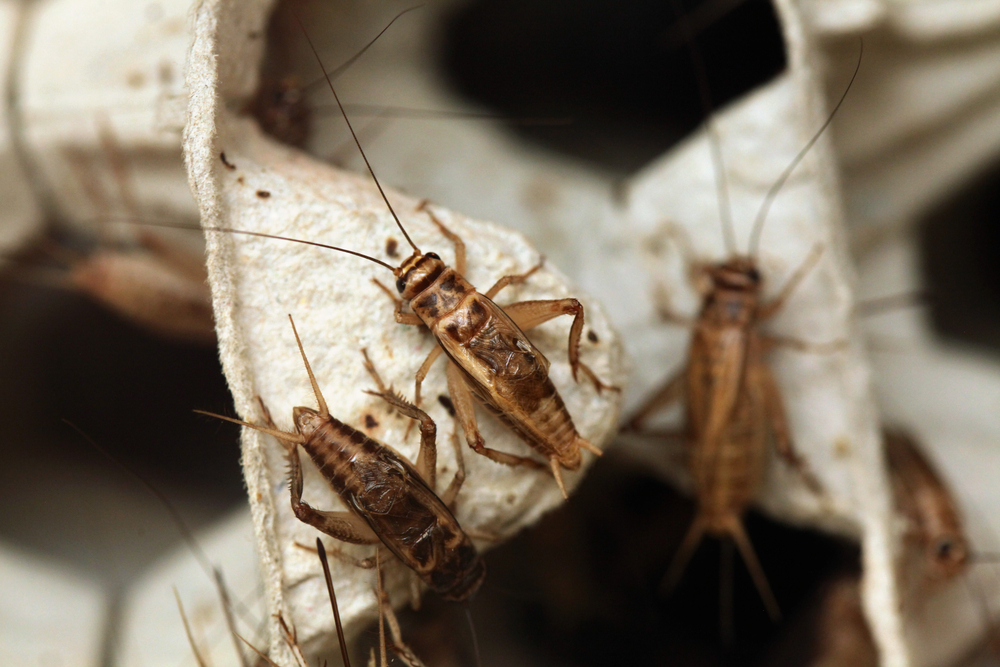
Some lizards are herbivorous and never eat meat, preferring leafy greens, fruits, and vegetables. Large lizards often find insects unsatisfying and eat larger prey instead.
Related Species And Articles To What Lizards Eat
If you’re interested in other lizard-related articles, have a look at:
- California Lizards Identification Guide
- 45 Texas Lizards That Are Native to the Lone Star State
- 30 Bearded Dragon Facts
You can also check out our other articles on lizards in general – we have vital guides that you can learn from!
